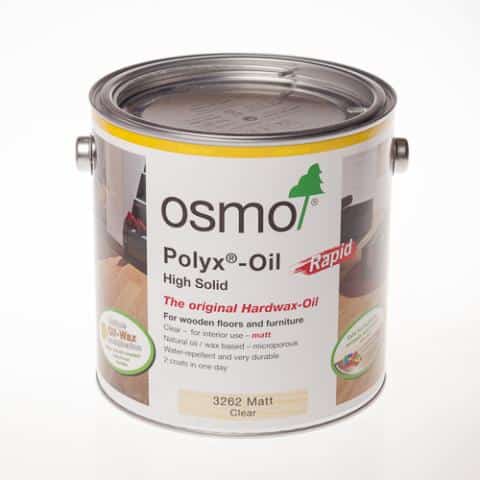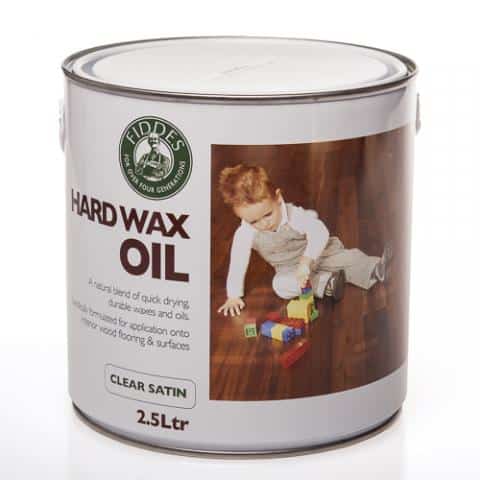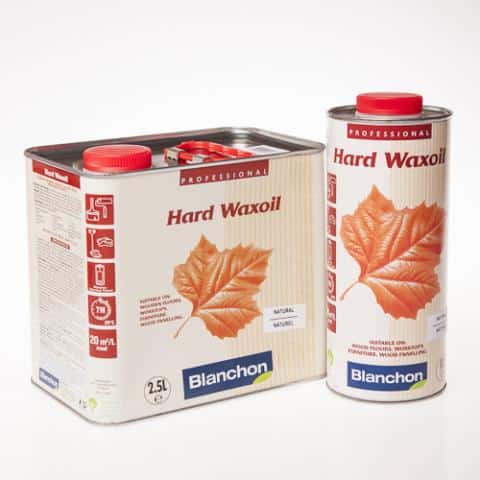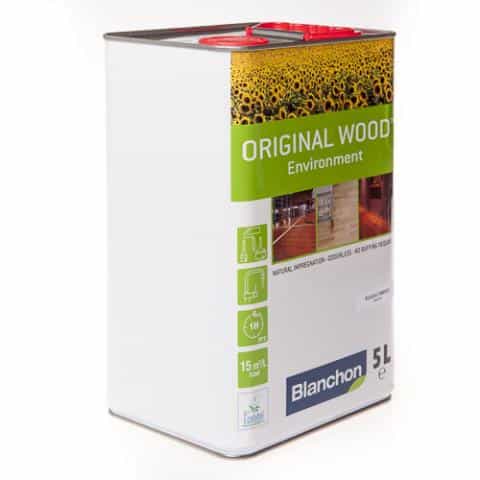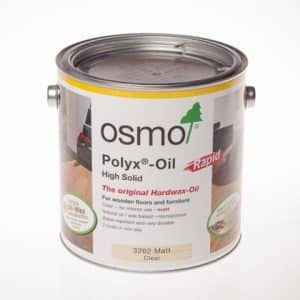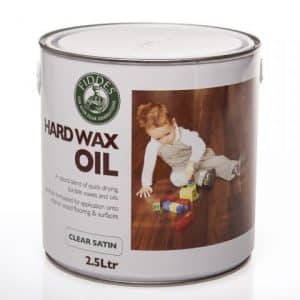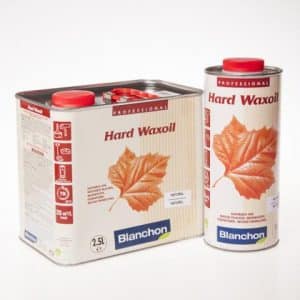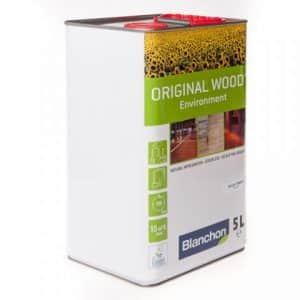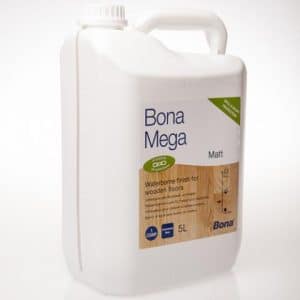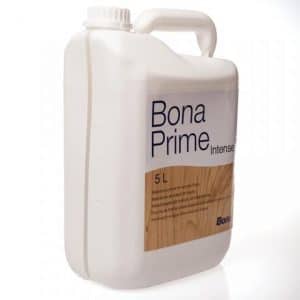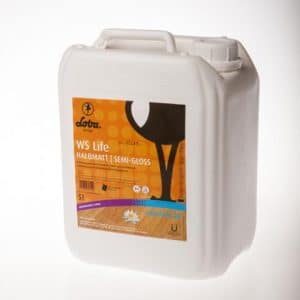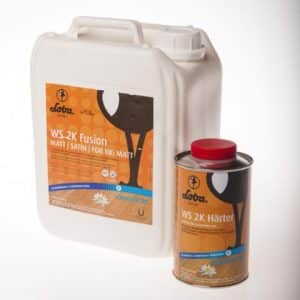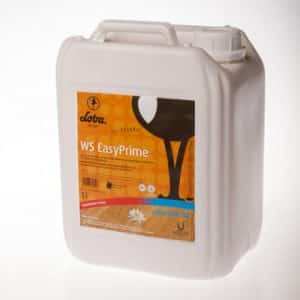Premium suppliers of quality engineered wood flooring for THE FLOORING TRADE
Guaranteed warranty on all products
Flooring Oils
Why choose oils over lacquer?
People often choose to oil their floors over lacquering for a variety of reasons, as each option offers distinct advantages and considerations.
Here are some of the key reasons why individuals might prefer oil finishes for their wood floors over traditional lacquers or varnishes:
Natural Appearance
Oiled wood floors generally have a more natural and matte appearance compared to the glossy finish of lacquered floors. Many people prefer the warm and organic look that oil brings out in wood, as it enhances the wood’s natural color and grain.
Tactile Sensation
Oiled wood floors maintain a tactile feel, as the oil penetrates the wood fibers without forming a thick protective layer on top. This can create a more pleasing sensation underfoot compared to the sometimes plastic-like feel of lacquered surfaces.
Easy Repair and Maintenance
Oiled floors are often easier to repair and maintain. If the surface becomes scratched or worn, it can usually be lightly sanded and re-oiled to restore its appearance. In contrast, repairing a damaged lacquered surface might require more extensive sanding and refinishing.
Natural Aging
Oiled floors tend to age gracefully, developing a patina over time that adds character to the wood. This aging process can be seen as a desirable feature, as it gives the floor a unique and lived-in look.
Less Visible Scratches
While scratches can still occur on oiled floors, they are often less noticeable due to the more forgiving nature of the finish. The scratches tend to blend into the textured surface, whereas lacquered surfaces can sometimes show scratches more prominently.
Breathability
Oiled floors allow the wood to “breathe” to some extent, meaning they can absorb and release moisture without trapping it underneath the surface. This can be advantageous in maintaining a stable wood structure and preventing issues like warping.
Eco-Friendly Options
Many oil products are formulated with natural ingredients and fewer volatile organic compounds (VOCs), making them a more environmentally friendly choice compared to some conventional lacquers or varnishes.
Ease of Application
Applying oil to wood floors can be a straightforward process, and even individuals with limited experience can achieve good results. Oils are often forgiving in terms of application, reducing the risk of uneven coverage.
It’s important to note that both oil and lacquer finishes have their pros and cons, and the choice between them depends on personal preferences, the specific type of wood, and the intended use of the space. Lacquered floors offer high durability and resistance to wear, making them suitable for high-traffic areas. Oiled floors, on the other hand, prioritize a natural and organic aesthetic while requiring more frequent maintenance.
Before making a decision, it’s a good idea to research and understand the characteristics of each finish, consider the maintenance requirements, and potentially even test small sections to see how they will interact with your specific wood type and environment.
Wood Flooring Oils and Lacquers
Is oiling your floor easy?
Applying oil to your flooring can vary in terms of ease depending on your experience, the type of oil product you’re using, and your familiarity with the process. Generally, oiling wood floors can be relatively straightforward, and many people find it to be an accessible DIY project.
Here are some steps to consider when applying oil to your wood flooring:
Preparation
Ensure that your wood floor is clean, dry, and free from dust, dirt, and any previous coatings. Sand the floor lightly if needed to ensure a smooth and even surface.
Choose the Right Oil
Select an oil product that is suitable for your type of wood and the desired finish. Read the manufacturer’s instructions and recommendations carefully.
Gather Supplies
Collect the necessary tools and materials, such as the chosen oil, an applicator (brush, roller, or cloth), gloves, and potentially a container for the oil.
Test in an Inconspicuous Area
Before applying the oil to the entire floor, it’s a good idea to test it in a small, hidden area to ensure you’re satisfied with the results.

Application
Apply the oil using the chosen applicator. Work in manageable sections to ensure even coverage.
Follow the manufacturer’s instructions for the specific application technique. Some oils may require you to spread the oil evenly, while others might involve applying a thicker coat and then buffing off excess.
Work with the grain of the wood for a uniform finish.
Drying Time
Allow the oil to dry according to the manufacturer’s recommendations. This can vary depending on the product and environmental conditions.
Buffing
Some oil products may require you to buff the surface after a certain amount of drying time. Buffing helps enhance the sheen and remove any excess oil.
Repeat if Necessary
Depending on the desired level of saturation and protection, you might need to apply multiple coats. Follow the manufacturer’s guidelines for the appropriate number of coats.
Maintenance
After the initial application, you’ll need to periodically maintain the oiled floor. This might involve regular cleaning and, over time, re-oiling to refresh the appearance.
While the process can be manageable for many DIY enthusiasts, keep in mind that there can be a learning curve. It’s important to be patient and thorough during each step to achieve the best results.
Additionally, if you’re uncertain about any aspect of the process or want to ensure a professional finish, you might consider consulting with a professional flooring installer or contacting the manufacturer’s customer support for guidance.
Overall, oiling your wood flooring can be a rewarding project that allows you to achieve a natural and attractive finish while enjoying the tactile qualities of the wood.
Is Oil Hard Wearing?
Oil finishes for wood floors can offer good durability and wear resistance, but they may not be as hard-wearing as certain lacquer finishes. The level of wear that an oiled wood floor can handle depends on several factors, including the type of oil used (Osmo Matt Rapid hardest wearing), the number of coats applied, the type of wood, and the maintenance routine.
Here are some considerations regarding the wear resistance of oiled wood floors:
In summary, while oiled wood floors can offer good durability and a natural appearance, they may require more attention and maintenance to maintain their longevity and resistance to wear compared to certain lacquered finishes. If you’re looking for a finish that is extremely hard-wearing and requires minimal maintenance, a lacquer might be a more suitable choice. However, if you value the aesthetic and tactile qualities of oiled wood and are willing to put in some extra maintenance effort, an oil finish could be a great option for your wood flooring.
Penetrating Protection
Oil finishes penetrate into the wood fibers, providing protection from within. This can help guard against minor scratches, scuffs, and wear. However, oils may not form as thick of a protective layer as some lacquers.
Regular Maintenance
Oiled wood floors generally require more frequent maintenance compared to some other finishes. Regularly cleaning and re-oiling the surface can help maintain its appearance and durability over time.
Enhanced Appearance
Oiled floors can often handle wear in a way that is less noticeable compared to lacquered or varnished surfaces. Scratches and wear tend to blend into the textured appearance of the oil finish.
Spot Repair
One advantage of oiled floors is that they can be spot-repaired. If a specific area becomes worn or scratched, you can sand and re-oil just that area without having to refinish the entire floor.
Protective Coats
Some oil products offer additional protection by incorporating additives or using a combination of oils and waxes. These products can provide better resistance to wear, spills, and stains.
Wood Type
Different types of wood have varying levels of natural hardness and susceptibility to wear. Some hardwoods are naturally more durable and resistant to scratches than softwoods.
Usage Patterns
The amount and type of traffic your floor experiences will impact its wear over time. High-traffic areas might show signs of wear more quickly, regardless of the finish type.
Maintenance Practices
Proper maintenance, such as using furniture pads, mats, and regular cleaning, can significantly extend the life and wear resistance of your oiled wood floor.
Osmo Oils for Wood Flooring & Cladding:
Osmo is a brand that specializes in wood finishes and coatings, including oils for wood flooring. Osmo offers a range of high-quality wood oils designed to enhance and protect wooden surfaces, such as floors, furniture, and decking. Their products are known for their emphasis on natural ingredients and environmentally friendly formulations.
Osmo’s wood flooring oils are popular for several reasons:
Natural Ingredients
Osmo oils are often based on natural oils and waxes, which can penetrate deep into the wood fibers, providing protection from within. This can result in a more natural and matte appearance compared to traditional varnishes or lacquers.
Enhanced Appearance
These oils can enrich the color and grain of the wood, providing a warm and inviting look that many people find appealing.
Easy Application
Osmo oils are typically user-friendly and can be applied with a brush, roller, or cloth. They tend to have a forgiving application process, allowing for even coverage and reduced risk of streaks or lap marks.
Maintenance and Repair
Osmo oils are often designed to be easy to maintain and repair. If the surface becomes worn or scratched, it can be lightly sanded and re-oiled to restore its appearance.
Breathability
Unlike some traditional polyurethane or epoxy finishes, Osmo oils allow the wood to “breathe.” This means that moisture can move in and out of the wood, which can be beneficial for the wood’s long-term health.
Environmentally Friendly
Osmo’s products are generally considered more environmentally friendly compared to some chemical-laden finishes. They often contain natural ingredients and have lower volatile organic compound (VOC) emissions.
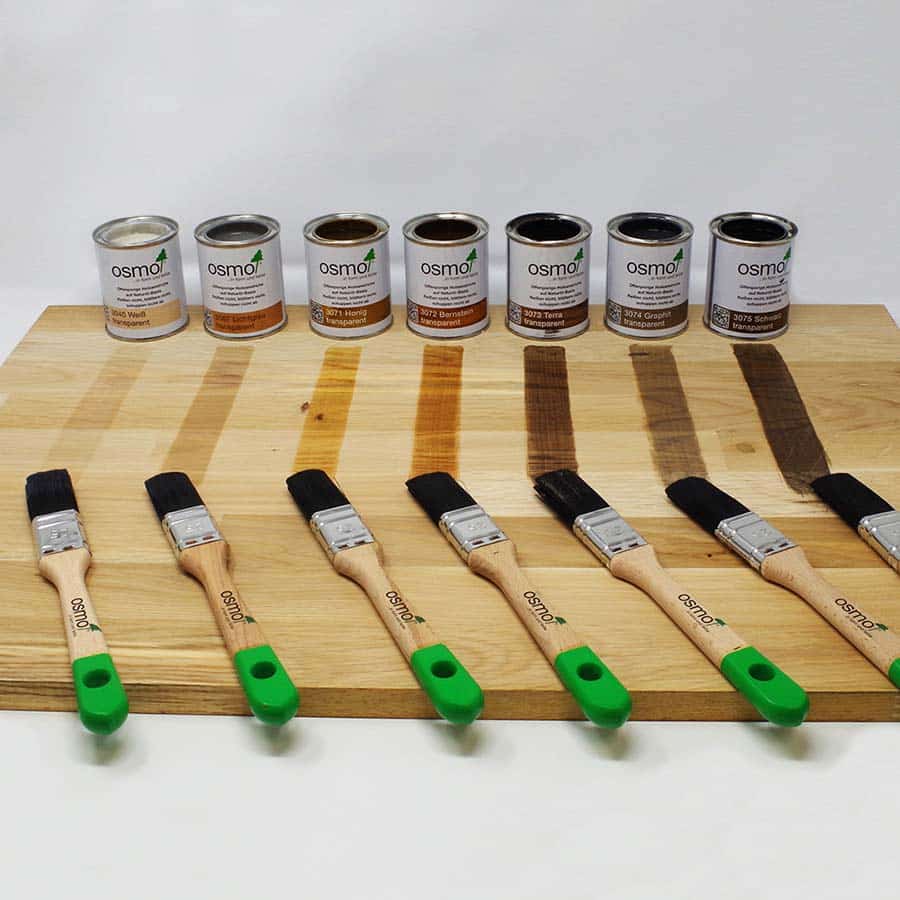
When using Osmo oils for wood flooring, it’s important to follow the manufacturer’s instructions for proper application, drying times, and maintenance. Additionally, keep in mind that different Osmo products may have specific properties and recommended uses, so be sure to choose the one that best suits your specific type of wood and desired finish.
Before using any wood finish, it’s a good idea to test it on a small, inconspicuous area of your wood flooring to ensure that you achieve the desired results. If you’re unsure about which Osmo oil product to use or how to properly apply it, consider consulting with a professional or the manufacturer’s customer support for guidance.
Why people use Blanchon Oil
Blanchon is another well-known brand in the field of wood finishes and coatings, including wood oils. Blanchon oils offer a variety of benefits for enhancing and protecting wood surfaces, such as flooring, furniture, and more.
Here are some potential benefits of using Blanchon oil products:
Enhanced Appearance
Blanchon oils can enrich the natural color and grain of wood, providing a warm and vibrant finish. This helps bring out the wood’s beauty and character, resulting in a visually pleasing appearance.
Natural Look and Feel
Similar to other high-quality wood oils, Blanchon oils are designed to penetrate the wood fibers, enhancing the wood’s natural look while maintaining a matte or satin finish. This gives the wood a natural, tactile feel that is preferred by many over the plastic-like finish of some varnishes.
Versatility
Blanchon oils can be used on a variety of wood surfaces, including floors, furniture, countertops, and more. This versatility allows you to create a consistent look and feel throughout your living space.
Protection from Within
Blanchon oils penetrate deep into the wood, providing protection from within the wood fibers. This can help protect the wood against moisture, stains, and everyday wear and tear.
Maintenance and Repair
Similar to other quality wood oils, Blanchon oils are usually easy to maintain and repair. If the surface becomes damaged or worn over time, it can often be lightly sanded and re-oiled to restore its appearance.
Easy Application
Blanchon oils are often formulated for easy application, allowing even beginners to achieve professional-looking results. They can be applied with a brush, roller, or cloth, and their forgiving nature can help reduce the risk of streaks or uneven coverage.
Breathability
Many Blanchon oil products allow the wood to breathe, meaning that moisture can move in and out of the wood. This can help prevent issues such as warping or cracking caused by changes in humidity.
Environmentally Friendly
Blanchon often emphasizes eco-friendly formulations, reducing the presence of volatile organic compounds (VOCs) in their products. This can make them a more environmentally conscious choice compared to some conventional finishes.
It’s important to note that the specific benefits of using Blanchon oil products may vary based on the product line and formulation. Before using any wood finish, including Blanchon oils, make sure to carefully read and follow the manufacturer’s instructions to achieve the best results. If you’re uncertain about which Blanchon oil product to use or how to apply it properly, consider seeking advice from a professional or contacting the manufacturer’s customer support for guidance.
FREE DELIVERY:
ACCESSORIES OVER £200 & LAMINATE / LVT ORDERS OVER £1500, PLACED BEFORE 3.00 PM
GET IN TOUCH
Have an idea or project then please get in touch...

